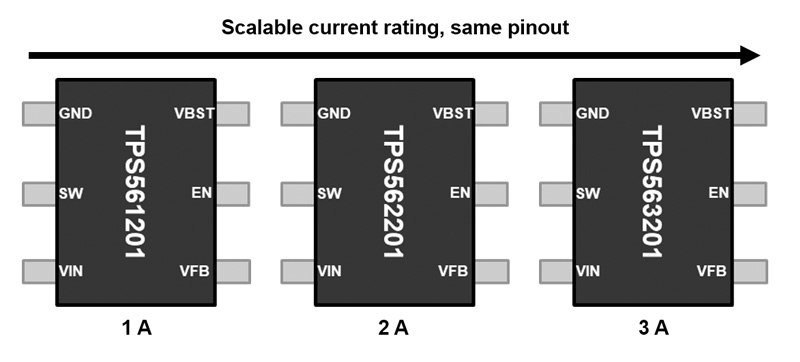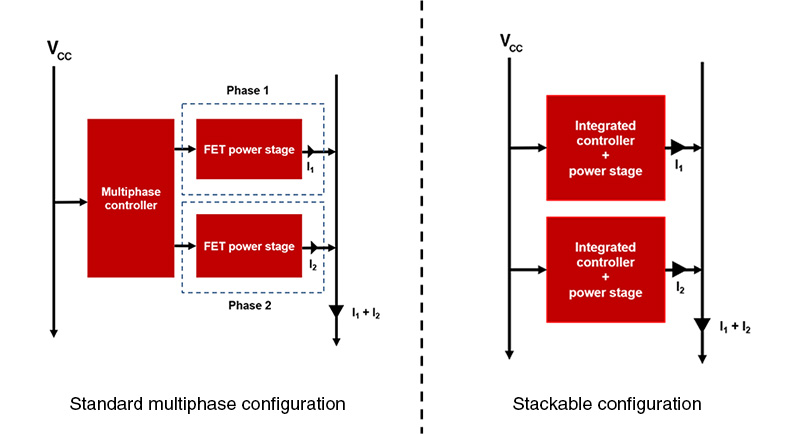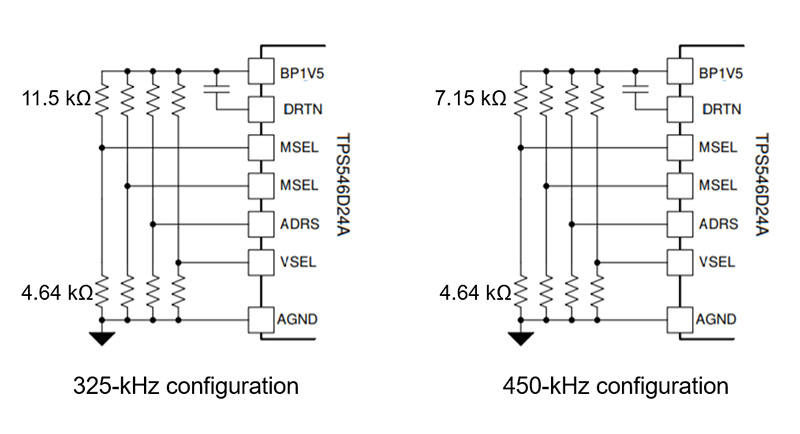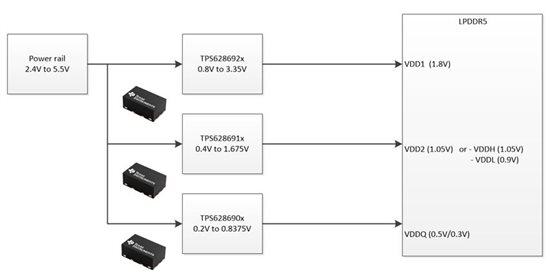SSZT309 april 2020 TPS546A24A , TPS546B24A , TPS546D24A , TPS561201 , TPS562201 , TPS563201 , TPS62869
Typically, scalable characteristics are something that Spider-Man looks for in a building. And although power-supply design may not seem like your typical superhero activity, the scalability of your design is often just as important as meeting the requirements of the application you’re designing for. What better way to enable this versatility than to use a scalable device family?
A scalable device family is a set of devices that are all pin-to-pin compatible, meaning that each device in the family shares the same pinout, as illustrated in Figure 1. In other words, if you needed to switch from a device rated at 10 A to one rated at 20 A, it’s as simple as removing the 10 A device and putting the 20 A device in its place without making major, invasive changes to the board layout. You can also continue to take advantage of the plethora of features that a family has to offer, like low external component counts, stackability and the PMBus protocol. Ultimately, scalable families are designed to service a broader base of applications instead of just being felicitous to one or two.
 Figure 1 Example of pin-to-pin scalable
devices
Figure 1 Example of pin-to-pin scalable
devicesHoney, I blew up the current rating!
 Figure 2 Footprints of standard vs. stackable configurations
Figure 2 Footprints of standard vs. stackable configurationsIn comparison to a single IC, stackable configurations enable greater heat dissipation, because heat is distributed over several devices. Stackability also often yields a lower component cost, given that lower-rated inductors cost less than the higher-rated inductors found in a single IC. Finally, you can mix-and-match parts from a scalable family in a stack to meet your current needs. This ease of interchangeability allows you to address your point-of-load needs more effectively.
With great power comes great pin-strapping ability
 Figure 3 Two different pin-strapping configurations to change the switching frequency of the TPS546D24A
Figure 3 Two different pin-strapping configurations to change the switching frequency of the TPS546D24AThis benefit extends to scalable PMBus-enabled converters as well! If the success of your design depends on being able to receive fault reporting or power good, it’s possible to extend these capabilities across the entire family. For stackable PMBus-compatible devices, one device acts as the mother of the stack, and the children operate off of the commands that this mother receives.
Different VOUT ranges, explore the Spider-verse
 Figure 4 Powering SDRAM rails with the TPS62869
Figure 4 Powering SDRAM rails with the TPS62869